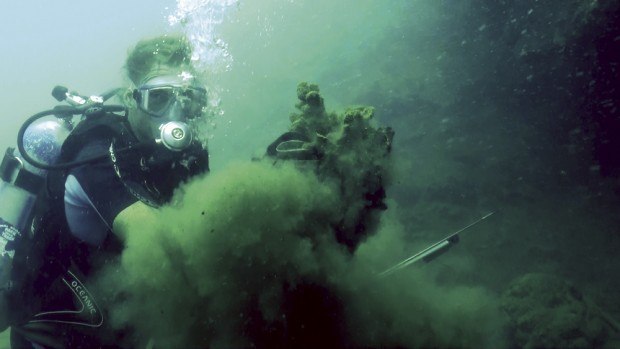LIHUE — The Hawaii Department of Health has received $75,000 to begin testing for pesticides in streams and waterways throughout the state. DOH Toxicologist Dr. Barbara Brooks said Thursday that Kauai will receive its share. The study comes in the
LIHUE — The Hawaii Department of Health has received $75,000 to begin testing for pesticides in streams and waterways throughout the state.
DOH Toxicologist Dr. Barbara Brooks said Thursday that Kauai will receive its share.
The study comes in the wake of House Concurrent Resolution 129, co-introduced in March by Reps. Dee Morikawa, Jimmy Tokioka and Derek Kawakami — which called for DOH Director Loretta Fuddy to head up a task force to study the effects of atrazine.
“We started with atrazine, but we’re going to expand it to other pesticides,” Brooks said of the upcoming efforts.
Manufactured by Syngenta, atrazine is one of the world’s most widely used and controversial herbicides. Banned in Europe since 2004 due to groundwater contamination risks, studies have also suggested it is associated with a number of health problems.
Funding for the DOH study, which will focus on both general and restricted use pesticides, comes from matching contributions from the Hawaii Department of Agriculture and the U.S. Geological Survey, according to Brooks.
The preliminary statewide effort is set to begin this fall, with all sampling complete by December.
“Working with our stakeholders, we are in the process of developing a limited sampling plan to measure very low concentrations of both restricted use and general use pesticides,” Brooks said. “Water samples will be collected by the HDOH and analyzed by the USGS National Water Quality Laboratory.”
Although she could not confirm specific sites or the list of pesticides DOH will test for, Brooks said the study will include several Kauai locations.
“We know we don’t have a lot of information about pesticide levels in streams, and we realize atrazine is not the only issue,” she said.
In addition to the state’s upcoming efforts, Terry Lilley, a biologist and videographer in Hanalei who first reported the rapidly-spreading coral disease along Kauai’s North Shore, said he too has secured funding to test for toxic chemicals, including atrazine.
However, he will focus on both North Shore streams and reefs.
At an estimated cost of $2,900 per sample, Lilley’s testing will be done through Test America, the largest independent environmental testing firm in the United States.
If chemicals are present, Test America will find them, said Steve LaZar, the company’s program manager.
“We’re using some pretty sophisticated techniques,” he said.
LaZar and other representatives of Test America discussed final details of the upcoming study with Lilley during a conference call Thursday morning.
Test America will provide Lilley with everything he needs to collect the samples, including jars and appropriate labels, according to LaZar. Each sample will be tracked with a legal chain of custody so that, if necessary, it can stand up in court, he said.
The money for the independent study comes exclusively from private donations, including $30,000 from a donor on the Mainland, according to Lilley.
“We’re going to start testing in about two weeks, with results within three weeks of that,” he said.
Due to the high cost, Lilley will initially collect six sediment samples. Sites will include the Hanalei River, Hanalei Bay, Waipa Creek, Waipa Reef, Anini Creek and Anini Bay.
“The whole idea here is about finding what is causing the coral die-off,” he said. “Will these tests pick up chemicals that may be causing it? We don’t know yet.”
The outbreak of coral disease along Kauai’s North Shore, described as an “epidemic” in a November 2012 report by the USGS, was initially thought to be exclusive to the common rice coral. In April, however, Dr. Thierry Work, head of infectious disease for USGS, said the blue rice coral was also being targeted by the cyanobacterial disease.
Over the last year, scientists from USGS, the University of Hawaii and the National Oceanic and Atmospheric Administration have been involved in the ongoing study.
While Lilley has documented the disease via video at a number of locations around the island, areas that have been most hard-hit include Anini, Waipa and Hanalei Bay. For that reason, he has focused the initial test in those areas.
Each collected sample will be sent to Test America’s lab in Sacramento, Calif., to be tested for a wide range of chemicals, including dioxins, organochlorine pesticides, organophosphorus pesticides, semivolatile organic compounds, herbicides, heavy metals and mercury.
“There’s a very long list of chemicals we can identify,” LaZar said.
When complete, Lilley said the initial tests results will be made available to anyone interested in seeing them.
“This is an initial test to find out how we should do more detailed tests,” Lilley said. “We need to know what’s going on in the environment with this stuff.”
• Chris D’Angelo, environmental reporter, can be reached at 245-0441 or cdangelo@thegardenisland.com.


